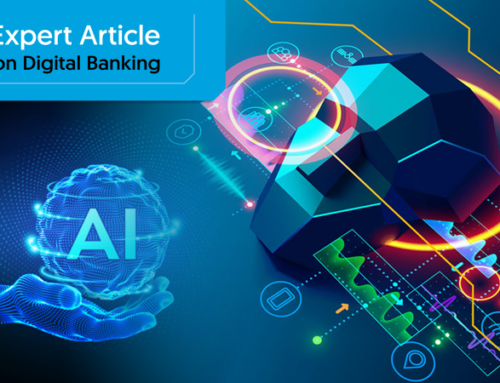About the author
The C-level management in banks is under huge pressure nowadays, experiencing a big wave of disruptions within the finance industry and across a variety of verticals, which creates a completely new set of challenges for banks.
As if the persistent Covid was not enough, many innovative fintech solutions, niche service providers that solve specific challenges and other disruptive companies to come is what puts senior bank management in the position that sales KPIs success demands new strategies and tactics.
And to do that, banks need to re-invent themselves.
Why is it harder than ever to acquire new clients in the banking sector?
One word: innovation.
The main reason why banks (and other financial institutions) struggle to acquire new customers rely on the fact that banks for years have been mostly “pushed” by regulatory changes and not by the urge to innovate.
In the past, regulatory changes were quite a good lever for the sales machine to acquire new customers.
Banks that were fast at implementing new regulatory changes were the ones able to acquire new customers with the clear USP – speed of the implementation of regulatory changes and safety that it provides to the end customers.
But, in the meantime – while banks were focused on regulatory changes and core banking offering –a completely new industry emerged.
The disruptive finance industry called fintech.
And that industry produced many companies within fintech, alternative lenders, and digital-first companies that were focused on today’s consumers’ needs, better than banks did at the time.
Not only did this open a window for completely new service providers but it made banks understand that acquiring clients (and keeping old ones happy) in an old way would not bring them success in the future.
Banks need a completely new way to compete in today’s market.
What should banks do to start winning the race again?
Figure out the priorities, and set up the technology to work for you. More and more retail and B2B customers are demanding a seamless banking experience. When we say seamless banking experience, we mean immediate access to bank products and services, friendly UX, and at the channel of their liking. Preferably without the need to leave their living room.
And this is why banks and other financial institutions will need to leverage the full potential of technology to meet these expectations if they want to retain existing customers and attract new ones.
Sales transformation – how to attract customers in 2021?
Banks must undergo a mindset shift – from a relatively hard-to-enter industry, they are now playing in the highly competitive environment, previously seen only in the FMCG sector. Naturally, this calls for a more aggressive approach, with fast product rollouts and keeping a close “eye on the competitor’s ball.
Banks need to provide added value to the customer and start being more proactive, problem-solving partners rather than big passive “take it or leave it” institutions.
They are heavily going “outbound” and actively targeting customers by offering a better, more convenient customer experience that meets today’s customers digital-first expectations.
So, let’s start with the sales transformation steps.
Step #1 – Create a buyer persona
Yup, even though at the first look we would say that everyone is a banking customer this is not the case anymore. In theory, we could say that “everyone needs a bank” but just take a look at what today’s market looks like – active banking customers are everyone from baby boomers to millennials.
And here we are talking about two completely different mindsets, needs and preferred ways of communication.
The latter of the two buyer personas need to be served in a completely different way and for one groups digital-first banking experience would be core criteria for selecting the banking service provider, while for other group some other criteria, such as location, would still be at the top of the criteria list.
Creating buyer persona profile(s), based on data and with sufficient detail: know their age, location, gender, motivation, preferred communication channels and their needs inside out as step No.1. in order to be able to position your bank as a trusted partner for your target group.
Step #2 – Enable full digital onboarding
Immediate access to bank products, services and accounts through digital onboarding is what makes today’s consumer happy, thus enabling your bank to meet the quota.
Excluding all unnecessary bureaucracy steps and enabling a full digital onboarding process should be a top priority for the banks if they would like to remain competitive in today’s landscape.
A hint: Find out here how you can onboard customers online in less than 9 minutes.
Step #3 – Product segmentation and customer personalization
Today, banking customers expect their banks to know who they are and what they really need.
And here we are not talking about putting a “first_name” and a “last_name” in a monthly newsletter.
Key points here are customer personalization and product segmentation that should enable the bank to know their customers’ financial situations and needs, even before they initiate conversations so the bank representative could be able to offer them the right product at the right time, which will solve their needs.
Step #4 – Omnichannel communication
Everyone is talking about omnichannel and there is a good reason for that.
Today’s bank customers expect omnichannel support as a must.
This means customers do not want to waste time and adjust to the “bank way of communication” but they expect vice versa.
They expect to be able to get in contact with their bank through their preferred channel such as Viber, WhatsApp, phone or via online chat and also to be able to start a task in one channel and finish it in another, with consistent communication.
In practice, this means that customers expect the banker they are speaking to can continue addressing their questions or concerns, at a later stage and perhaps on a different channel.
Step#5 – Payments technology
The days of cash and checks are (almost) behind us.
What banks need to think of while preparing a strategy for acquiring new clients is not of which payment technology is needed today but which payment solutions would be needed tomorrow.
This part of the financial industry is changing so rapidly – from technology to new solution providers – that it is very hard to create a long-term strategy, which is why #6 is very important.
Step #6 – Fast time to market product delivery
One of the core KPIs of the strategy for customer acquisition should be fast time to market lifecycle.
This means that the strategy should include the implementation of an IT infrastructure developed in a way to be able to implement new technologies quickly and before the competition.
As a bank, being flexible and being able to deliver new products and services that banking customers need will be crucial for new customer acquisition as here we are not talking about big vs small banks but fast vs slow banks where fast ones win customers.
Recap:
Almost every bank in the world has some kind of digital offering, but the majority still struggle to get close to the experience provided by the new players. And the customer’s expectations benchmark is high. Trying to match these benchmarks using the old ways and (legacy) IT systems is a lost cause.
Luckily, holistic digital banking solutions can help align, unify and speed up selling of banking process online and in the branch, all the while making the business decisions based on data, which provides a personalized offer that is relevant for customer and increases the conversion rates for banks’ profitability.
To put it simply – a win-win situation both for banks and clients.
Wondering how to start? Ask the experts:
ASEE is a digital banking solution provider with vast experience in implementing different solutions in banks of various sizes and markets. For a free consulting call or more information get in touch.






